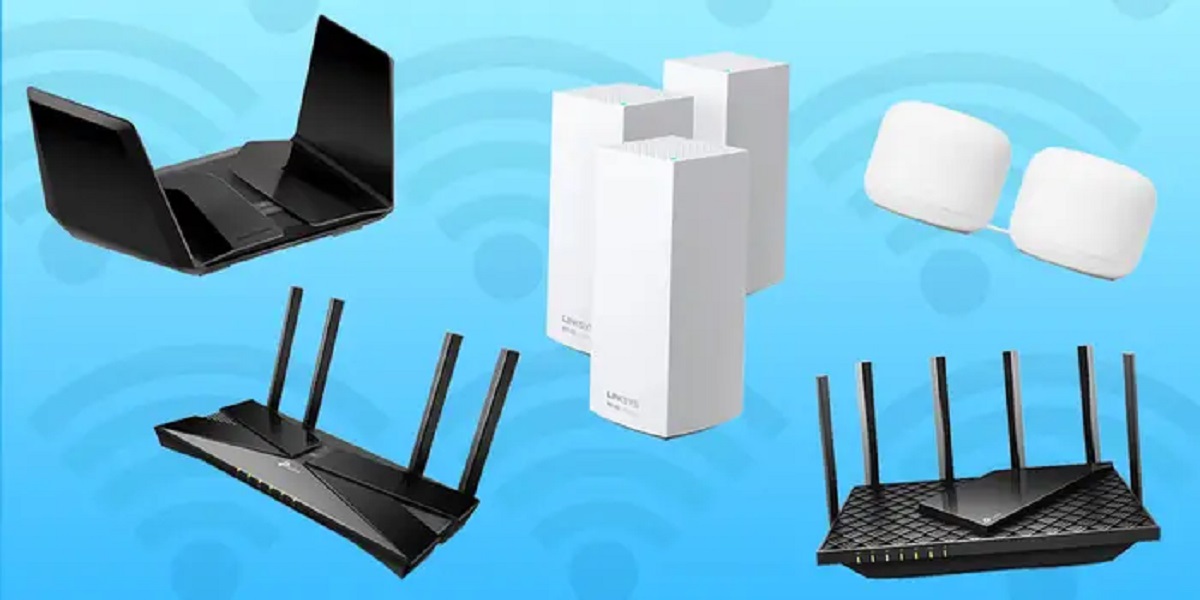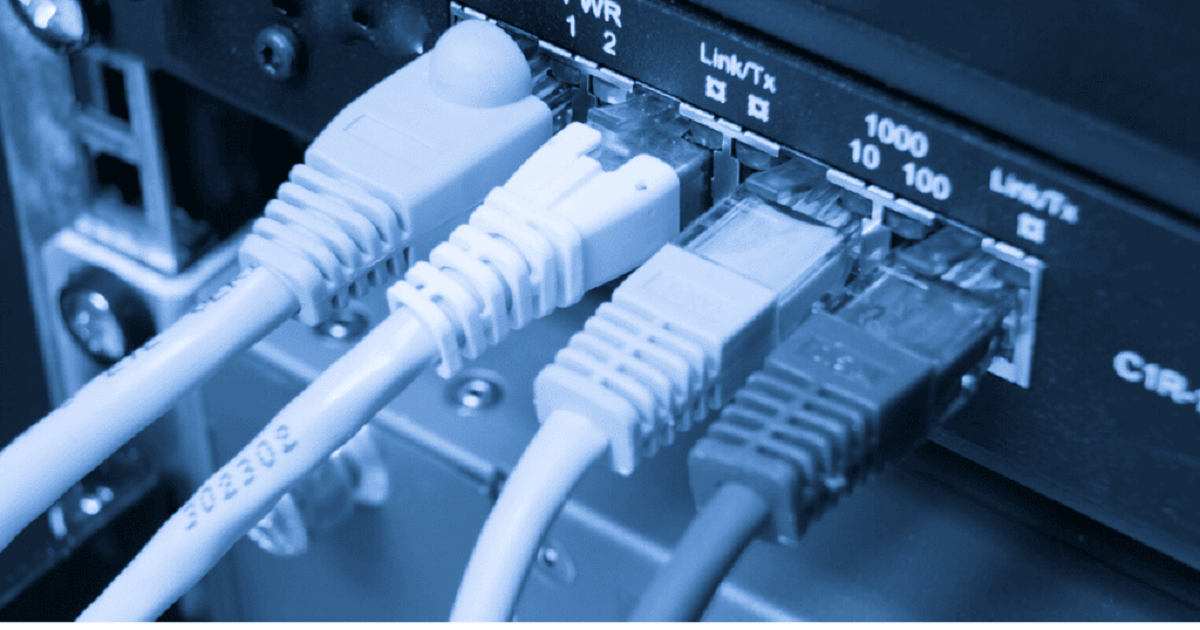Introduction
Welcome to our guide on routers for wifi! Whether you’re setting up a new home network or looking to upgrade your existing one, finding the right router is essential for a reliable and fast internet connection. Routers come in different types, with varying features and price ranges to suit your specific needs and budget.
In today’s digital age, a wifi router plays a crucial role in keeping us connected to the world. From streaming movies and music to online gaming and remote work, our reliance on a stable and seamless internet connection has never been greater. The router serves as the gateway between your devices and the internet, ensuring that data is transmitted efficiently and securely.
When it comes to choosing a router, it’s important to consider several factors, such as your internet service provider (ISP), the size of your living space, the number of devices connected simultaneously, and the activities you’ll be using the internet for. All of these factors can have a significant impact on the performance and price range of routers.
Throughout this guide, we’ll explore the different types of routers available on the market and discuss their price ranges. We’ll also provide some budget-friendly options and tips on getting the most value for your money. By the end of this guide, you’ll be well-informed and confident in selecting the right router for your wifi needs.
So, if you’re ready to dive into the world of routers and learn about their prices, features, and more, let’s get started!
Factors that Determine Router Prices
Before we delve into the different types of routers and their price ranges, it’s important to understand the factors that determine router prices. By knowing these factors, you can make an informed decision and find a router that fits your needs and budget.
1. Technology and Features: The technology and features built into a router greatly impact its price. High-end routers often come equipped with advanced features like tri-band technology, MU-MIMO (Multi-User Multiple Input Multiple Output), and beamforming, which enhance performance and connectivity. These features come at a higher cost compared to basic routers with fewer bells and whistles.
2. Wireless Standard: The wireless standard supported by a router also influences its price. The latest wireless standard, known as Wi-Fi 6 (802.11ax), offers faster speeds, increased capacity, and improved energy efficiency. However, routers that support this standard generally come at a higher price point compared to older standards like Wi-Fi 5 (802.11ac) or Wi-Fi 4 (802.11n).
3. Speed and Range: Routers with higher speeds and wider coverage tend to be more expensive. If you have a large home or require fast internet speeds for tasks like online gaming or 4K streaming, you’ll likely need a router with a higher price tag to meet your demands.
4. Brand and Reputation: Well-known brands with a strong track record in the networking industry tend to command higher prices for their routers. These brands often invest in research and development to ensure product reliability, performance, and security.
5. Additional Features: Some routers come with additional features like built-in parental controls, USB ports for connecting external devices, or VPN (Virtual Private Network) support. These added functionalities can influence the price of the router.
6. Market Demand: Supply and demand dynamics also play a role in determining router prices. Popular routers that are in high demand may have a premium price due to their popularity and limited availability.
It’s important to note that while higher-priced routers generally offer more advanced features and improved performance, they might not always be necessary for every household or usage scenario. Understanding your specific needs can help you strike the right balance between features and price.
Now that we’ve explored the factors that affect router prices, let’s take a closer look at the different types of routers available and their respective price ranges.
Different Types of Routers and Their Price Range
When it comes to routers, there are various types available, each catering to different needs and budgets. Let’s take a look at the different types of routers and their corresponding price ranges:
1. Basic Routers: Entry-level routers are the most affordable option and are suitable for small homes or apartments with minimal internet usage. These routers generally offer basic features, decent speeds, and support for the standard Wi-Fi 4 or Wi-Fi 5. Prices for basic routers can range from $20 to $100.
2. Mid-Range Routers: Mid-range routers strike a balance between price and performance. They are suitable for medium-sized homes with moderate internet usage. These routers often offer better speeds, wider coverage, and support for newer wireless standards like Wi-Fi 5 or Wi-Fi 6. Prices for mid-range routers typically range from $100 to $300.
3. High-End Routers: For those seeking top-of-the-line performance and advanced features, high-end routers are worth considering. These routers are ideal for larger homes or offices with heavy internet usage and multiple connected devices. They offer faster speeds, greater coverage, and support for the latest wireless standards and technologies. Prices for high-end routers can vary significantly, ranging from $300 to $500 or more.
4. Budget-Friendly Router Options: If you’re on a tight budget, there are still options available to ensure a decent internet connection. Some routers from reputable brands offer budget-friendly options that provide reliable performance for basic internet usage. These routers can range in price from $20 to $100, offering a cost-effective solution for casual web browsing and light streaming.
It’s important to consider your specific needs, internet usage patterns, and the size of your living space when choosing the right router type and price range. While it might be tempting to opt for a higher-end router with all the bells and whistles, it’s essential to assess whether the added features and performance justify the higher cost for your particular requirements.
Now that we have explored the different types of routers and their price ranges, let’s take a closer look at some specific options within each category and their corresponding features.
Basic Routers: Entry-Level and Affordable Options
If you’re looking for an entry-level router that offers affordability without compromising on basic functionality, there are several options available in the market. These basic routers are suitable for small homes or apartments with minimal internet usage. Here are a few entry-level routers worth considering:
1. TP-Link N300: The TP-Link N300 is a popular choice for those on a budget. It offers basic wireless speeds of up to 300Mbps, suitable for web browsing and light streaming. This router typically comes with a price tag ranging from $20 to $40, making it an affordable option for casual internet users.
2. Linksys E900: The Linksys E900 is another entry-level router that offers reliable wireless connectivity at an affordable price. With speeds of up to 300Mbps, this router provides sufficient performance for everyday internet activities. It usually falls within the price range of $30 to $50.
3. NETGEAR N600: The NETGEAR N600 is a step up from basic entry-level routers, offering dual-band functionality and speeds of up to 600Mbps. It provides better performance and coverage, making it suitable for small to medium-sized homes. The price range for the NETGEAR N600 typically falls between $40 and $70.
Remember, while these basic routers offer affordability, they may not provide the advanced features or extensive coverage of higher-priced models. It’s important to consider your specific internet usage needs when choosing an entry-level router.
Additionally, it’s worth noting that prices may vary depending on promotional offers, discounts, or newer models released by manufacturers. It’s always a good idea to compare prices from different retailers and check online marketplaces for any deals or sales before making a purchase.
Now that we’ve explored some entry-level and affordable options, let’s move on to the next category: mid-range routers that offer a balance between performance and affordability.
Mid-Range Routers: Balancing Performance and Affordability
If you’re looking for a router that offers a balance between performance and affordability, mid-range routers are a great option. These routers cater to the needs of medium-sized homes with moderate internet usage. They typically offer better speeds, wider coverage, and support for newer wireless standards. Here are a few mid-range routers worth considering:
1. ASUS RT-AC66U B1: The ASUS RT-AC66U B1 is a popular mid-range router that offers dual-band functionality and speeds of up to 1750Mbps. It comes with features such as Quality of Service (QoS) for prioritizing certain devices or applications and USB ports for sharing files or connecting external devices. The price range for the ASUS RT-AC66U B1 usually falls between $100 and $150.
2. TP-Link Archer A9: The TP-Link Archer A9 is another mid-range router that offers dual-band speeds of up to 1900Mbps. It provides good coverage and supports features like beamforming technology for improved signal strength. The Archer A9 typically falls within the price range of $100 to $150.
3. NETGEAR R6700: The NETGEAR R6700 is a reliable mid-range router that offers dual-band speeds of up to 1750Mbps. It comes with features like three detachable antennas for better coverage and four Gigabit Ethernet ports for wired connections. The price range for the NETGEAR R6700 generally ranges from $100 to $150.
Mid-range routers strike a balance between price and performance, offering better speeds and coverage compared to basic entry-level options. They are suitable for homes with multiple devices and moderate internet usage, allowing for smooth streaming, online gaming, and browsing. However, if you have specific requirements like heavy gaming or 4K streaming, you may need to consider higher-priced options.
As with any purchase, it’s worth comparing prices from different retailers and checking for deals or promotions to ensure you get the best value for your money. Additionally, keep an eye out for newer models or upgraded versions of these mid-range routers, as they may offer additional features or improved performance.
Now that we’ve explored some mid-range router options, let’s move on to the next category: high-end routers that offer top-of-the-line performance with a higher price tag.
High-End Routers: Top-of-the-Line Performance with a Higher Price Tag
If you’re looking for a router that maximizes performance and offers advanced features, high-end routers are the way to go. These routers are designed for larger homes or offices with heavy internet usage and multiple connected devices. While they come with a higher price tag, they provide top-of-the-line performance and cutting-edge technologies. Here are a few high-end routers worth considering:
1. NETGEAR Nighthawk X6 AC3200: The NETGEAR Nighthawk X6 AC3200 is a tri-band router that offers blazing-fast speeds of up to 3200Mbps. It features Smart Connect technology that automatically selects the best frequency band for each device to optimize performance. With its six high-performance antennas, this router provides exceptional coverage and is suitable for demanding tasks like 4K streaming and online gaming. The price range for the Nighthawk X6 AC3200 usually falls between $250 and $300.
2. ASUS RT-AX88U: The ASUS RT-AX88U is a high-end router that supports the latest wireless standard, Wi-Fi 6 (802.11ax). It offers speeds of up to 6000Mbps and features eight Gigabit Ethernet ports for wired connections. This router is packed with advanced features like Adaptive QoS for prioritizing gaming or streaming traffic and AiProtection Pro for enhanced security. The price range for the ASUS RT-AX88U typically ranges from $300 to $350.
3. Linksys Max-Stream AC5400: The Linksys Max-Stream AC5400 is a powerhouse router designed to handle multiple devices simultaneously. It offers tri-band functionality and speeds of up to 5400Mbps. This router comes with MU-MIMO technology for seamless streaming and gaming, as well as eight external antennas for maximum coverage. The price range for the Linksys Max-Stream AC5400 generally falls between $350 and $400.
High-end routers are well-suited for demanding internet activities and large households with multiple devices. They provide exceptional speeds, wider coverage, and advanced features like beamforming, MU-MIMO, and additional security measures. These routers ensure a reliable and fast internet connection, especially for those who require high-performance networking solutions.
While high-end routers offer top-of-the-line features, it’s important to assess whether these features are necessary for your specific needs. If you have a small apartment or minimal internet usage, a high-end router may not be the most cost-effective choice.
Before making a purchase, it’s recommended to check for reviews and performance benchmarks of specific high-end models to ensure they meet your expectations. Additionally, keep in mind that prices may vary depending on promotional offers or sales, so it’s worth comparing prices from different retailers.
Now that we’ve explored high-end router options, let’s move on to discussing budget-friendly options and considerations when buying a router on a budget.
Budget-Friendly Router Options
If you’re on a tight budget, there are still options available that provide decent internet connectivity without breaking the bank. Budget-friendly routers offer an affordable solution for casual internet usage and smaller living spaces. Here are a few budget-friendly router options worth considering:
1. TP-Link Archer C50: The TP-Link Archer C50 is a budget-friendly router that offers reliable performance for basic internet activities. With dual-band functionality and speeds of up to 1200Mbps, this router provides a decent wireless connection. It usually falls within the price range of $30 to $50.
2. D-Link DIR-819: The D-Link DIR-819 is another affordable option that delivers reliable wireless connectivity. It offers dual-band speeds of up to 750Mbps, making it suitable for light web browsing and streaming. The price range for the D-Link DIR-819 typically falls between $20 and $40.
3. NETGEAR AC1200: The NETGEAR AC1200 is a budget-friendly router that offers dual-band speeds of up to 1200Mbps. It provides decent coverage and performs well for everyday internet usage. The price range for the NETGEAR AC1200 usually ranges from $40 to $60.
While these budget-friendly routers may not offer the advanced features or extensive coverage of higher-priced models, they still provide a reliable wireless connection for basic internet usage. They are suitable for small apartments, dorm rooms, or households with minimal internet needs.
When considering a budget-friendly router, it’s essential to keep your specific internet usage patterns in mind. If you have multiple devices or require faster speeds for tasks like HD streaming or online gaming, you may need to consider a mid-range option that offers better performance.
It’s also worth noting that prices may vary depending on promotions or discounts offered by retailers, so it’s a good idea to compare prices from different sources to find the best deal.
Now that we’ve explored budget-friendly router options, let’s move on to discussing some considerations when buying a router on a budget.
Considerations When Buying a Router on a Budget
Buying a router on a budget requires careful consideration to ensure you get the best value for your money. While affordability is important, it’s essential to assess your specific needs and make informed decisions. Here are some key considerations to keep in mind when purchasing a router on a budget:
1. Internet Usage: Evaluate your internet usage patterns and the number of devices that will be connected to the router. If you have multiple devices or engage in high-bandwidth activities like HD streaming or online gaming, you may need a router with better performance and higher speeds.
2. Coverage Area: Determine the size of your living space and the range of coverage needed. If you have a small apartment, a budget-friendly router with limited coverage may suffice. However, if you have a larger home, opt for a router that offers wider coverage to ensure a reliable connection throughout the premises.
3. Wireless Standard: Consider the wireless standard supported by the router. While budget-friendly routers may not support the latest standards like Wi-Fi 6, they should at least support Wi-Fi 4 or Wi-Fi 5. Ensure that the router you choose aligns with your Wi-Fi enabled devices and provides adequate speeds for your needs.
4. Brand and Reputation: While affordability is a priority on a budget, it’s still important to opt for routers from reputable brands. Well-known brands often provide better customer support, firmware updates, and overall reliability. Research the brand’s reputation and read reviews to ensure you choose a budget-friendly router from a trusted manufacturer.
5. Additional Features: Assess whether you require any additional features such as USB ports for printer or file sharing, guest network capabilities, or parental controls. While budget-friendly routers may have limited additional features compared to higher-priced models, consider the ones that are essential for your specific needs.
6. Price and Value: Compare prices from different retailers and consider any ongoing promotions or discounts. Look for routers that offer good value for their price, balancing affordability with performance and features. Don’t forget to factor in the warranty and customer support offered by the manufacturer.
By considering these factors, you can make an informed decision when buying a router on a budget. While budget-friendly routers may not have all the advanced features or high-end performance of their more expensive counterparts, they can still provide a reliable and satisfactory internet connection for everyday use.
Now that we’ve explored considerations for buying a router on a budget, let’s move on to discussing where to buy routers and compare prices.
Where to Buy Routers and Compare Prices
When it comes to purchasing a router, there are various options available to compare prices and find the best deal. Here are some common places where you can buy routers and effectively compare prices:
1. Online Retailers: Online marketplaces like Amazon, Best Buy, and Newegg offer a wide selection of routers at competitive prices. These platforms allow you to compare different models, read customer reviews, and often provide discounts or deals. Be sure to check for any ongoing promotions or special offers that can help you save money.
2. Electronics Retail Stores: Local electronics retailers such as Best Buy, Fry’s Electronics, or Micro Center are convenient options for purchasing routers. You can visit their physical stores to inspect the routers and speak with knowledgeable staff who can provide recommendations and guidance. These stores often have sales or special offers that can help you find discounted routers.
3. Online Auctions and Resale Platforms: Platforms like eBay or Craigslist provide opportunities to find used or refurbished routers at lower prices. However, be cautious when purchasing from these sources, as you may not receive a warranty or guarantee of the router’s condition. It’s important to thoroughly research the seller and communicate to ensure a safe and satisfactory transaction.
4. Manufacturer’s Website: Visiting the official website of the router’s manufacturer can allow you to explore the available models, compare features, and find the most up-to-date routers. Additionally, manufacturers’ websites often provide direct sales or links to authorized retailers where you can find competitive prices.
When comparing prices, it’s essential to take note of any additional costs, including shipping fees or taxes. Be mindful of any return policies or warranties offered by the seller or manufacturer, as this can provide peace of mind in case you encounter any issues with the router.
It’s also worth considering reading customer reviews and expert opinions on the router models you are interested in. These resources can provide valuable insights into the performance, reliability, and overall user experience of different routers.
By exploring various sources and comparing prices, you can find the best deal for your budget without compromising on the quality and performance of the router.
Now that we’ve discussed where to buy routers and compare prices, let’s conclude our guide on routers for wifi.
Conclusion
Choosing the right router for your wifi needs is crucial for a reliable and fast internet connection. Throughout this guide, we have explored the factors that determine router prices, the different types of routers available, and budget-friendly options to consider. We also discussed important considerations when buying a router on a budget and where to compare prices.
By understanding the technology, features, and wireless standards behind routers, you can make an informed decision that aligns with your specific needs and budget. Basic routers offer an affordable entry point for small homes or apartments, while mid-range routers provide a balance between performance and affordability for medium-sized homes. For those seeking top-of-the-line performance, high-end routers offer advanced features and cutting-edge technologies with a higher price tag.
When buying a router on a budget, it’s important to consider factors such as your internet usage, coverage needs, and the additional features that are essential for your specific requirements. By comparing prices from different sources and exploring reputable retailers, you can find a budget-friendly router that meets your needs without compromising on quality.
In conclusion, investing in a router that fits your needs and budget is a worthwhile endeavor. A reliable and efficient wifi connection plays a crucial role in today’s digital landscape. With the knowledge gained from this guide, you are well-equipped to make an informed decision and select the right router that will keep you connected to the online world seamlessly.











![How To Increase Your Internet Speed Right Now [GUIDE]](https://robots.net/wp-content/uploads/2022/04/how-to-increase-your-internet-speed-featured-300x175.jpg)













